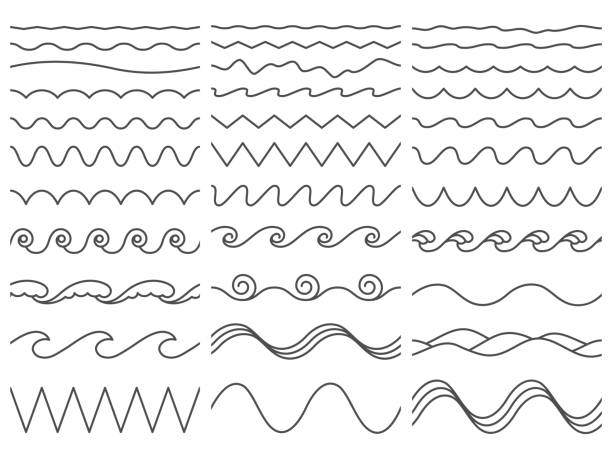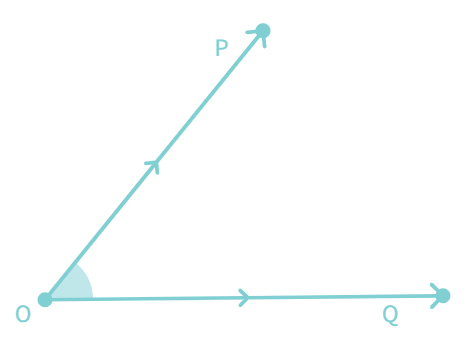A few geometrical objects- Euclid’s definitions

Euclid of Alexandria
A solid has shape, size, position, and can be moved from one place to another. Its boundaries are called surfaces. They separate one part of the space from another, and are said to have no thickness. The boundaries of the surfaces are curves or straight lines. These lines end in points.
Consider the three steps from solids to points (solids-surfaces-lines-points). In each step we lose one extension, also called a dimension. So, a solid has three dimensions, a surface has two, a line has one and a point has none. Euclid summarised these statements as definitions. He began his exposition by listing 23 definitions in Book 1 of the ‘Elements’.
Think of Euclid's "Elements" as a big, fascinating book of puzzles and mysteries about shapes and numbers that people have been exploring for thousands of years. Euclid wrote this book like a story that starts with the simplest ideas, called "definitions," and then uses these ideas to build more complicated ones. A few of them are given below :
Point:
Consider the canvas below. You can draw anything on it. What is the smallest thing you can do on this. Go ahead. Draw different things.
You have drawn something which is ${size} in size. You can draw something smaller.
Try again.
Congrats! You drew the smallest thing possible.
The smallest thing you can draw above is a dot(just one click). Euclid says this dot is nothing but a point. A
In this , labelled dots indicate interactive points you can move around, while not labelled dots indicate fixed points which you can’t move.
Done with points. Lets now build on top of this.
Lines:
Mark two point on the canvase provided and try to join the points.
How many ways you can do it?
All the things which join two points are called lines.
A line has a length but no breadth
Lines can be curved lines as shown below:

Now try marking two point in the space provided and draw a line to join them.
It is the shortest path joining the two points and is called a straight line. A straight-line is one which lies evenly with points on itself.The two points are called the extremities of a line.
Let us see if you can tell the difference between a straight line and a curved line. Can you see and identify them correctly? Drag the images given and try to drop them in the right buckets.
Properties of a straight line:
Now, on to the next part of our journey. We know what a straight line is. But what are it's properties? For example, you are a student. What are your properties?
Are you a quick learner?
Do you make friends quickly? I am sure you do. All these are your properties. Similarly, what are the properties of a straight line which are always true. Let's explore.
- Intersecting lines: In the drawing panel, four points are given.Connect points A to D and points B to C with straight lines.
Both the lines meet at
From what we have seen so far, we can deduce that when two lines intersect each other, they share (a)
That point is called the
Two lines m and l as shown above, intersect each other and coincide at common intersection point O.
Activity
In the canvas below draw two lines such that they intersect and answer the question given below:
(a) Can two lines intersect in more than one point?
Remember: In mathematical terms, a line is also an example of a curve.
Non-straight curves can intersect at more than once but not straight curves.
If you have two distinct lines, and they intersect, they will do so at a single unique point.
2.Two lines intersect at more than one point:
In the designated area, attempt to shift one of the straight lines so that they meet at more than one point. Take note of these observations:
If it appears that they intersect at more than one point, then what you are observing is not an intersection but rather a
We conclude that if a line intersects at more than one point than it is the same straight line.
3.Extension of a line between two points : A line drawn between two points can be extended on both the sides but can be the same straight line.
3.Number of lines passing through one point:
A point P is marked on the Canvas.Try to draw lines passing through point P.
How many lines you can draw that pass through the point P?
Infinitely many straight lines can share the same point and intersect at it. This point of intersection is known as the concurrent point.
4.Number of lines passing through one point: Let us consider two points P and Q.In the canvas provided, try drawing lines passing through P or Q or both.How many could you draw?
In geometry, given two distinct points, P and Q, there is exactly one straight line that passes through both points. This is a fundamental principle based on Euclidean geometry. No matter how many times you draw a line between these two points, all such attempts represent the same line in the geometric sense, as they all share the same two points.
Circles:
The round shape is called circle. Many of you enjoy cookies, which come in shapes such as round or triangle. The
Try to move the point P around the circle. What do you observe? You see that the length of the line segment as you move on the cirlce is
A
NOTE:A smooth curve joining two endpoints is an Arc. In general, an arc is one of the portions of a circle.
Angles
Let us take three circles with the same radius.
1
When two rays meet at a point then an angle is formed between them.The two rays forming the angle are called the arms or sides of the angle. The common initial point is the vertex of the angle.

Above we have an angle formed by rays OP and OQ with O is the vertex.
But what about the sides? Are they OP and OQ or not ? How to name the angle?
It is simply, an angle at O. We can be more specify by identifying a point on either "arms" and including the vertex in the middle to name the angle. Angle POQ (∠POQ) is the mathematical name of the said angle.
When specifying the angle, the vertex is always written as the middle letter as a convention.
Congruence
These two shapes basically look identical. They have the same size and shape, and we could turn and slide one of them to exactly match up with the other. In geometry, we say that the two shapes are
The symbol for congruence is
Here are a few different geometric objects – connect all pairs that are congruent to each other. Remember that more than two shapes might be congruent, and some shapes might not be congruent to any others:
Two line segments are congruent if they
Note the that “congruent” does not mean “equal”. For example, congruent lines and angles don’t have to point in the same direction. Still, congruence has many of the same properties of equality:
- Congruence is symmetric: if
X ≅ Y then alsoY ≅ X . - Congruence is reflexive: any shape is congruent to itself. For example,
A ≅ A . - Congruence is transitive: if
X ≅ Y andY ≅ Z then alsoX ≅ Z .
Perpendicular Lines
If two lines intersect at a 90° angle (right angle) then these lines are called
In this example, we would write a
Parallel Lines
In the above images, what observations do we make? Lets have some fun. Move the lines around and see if you can make them intersect. Go ahead. Give it a try. Are there intersecting line segments?
The line segments will never meet, however far they are extended. Two straight lines that never intersect are called
Let's take the example of a table. Take the edges of the table that are opposite to each other. What can be concluded? They are an example of

What about the adjacent sides of a table? They seem to meet at the corner of the table. Thus, they are an example of
Give a few examples for a pair of parallel lines from your surroundings.
If two lines say, AB and CD are parallel, we write AB || CD.
Some examples of parallel lines that we can see in real-time include:

Railway Tracks

Opposite Edges of Ruler
A good example of parallel lines in real life are railroad tracks. But note that more than two lines can be parallel to each other!
In diagrams, we denote parallel lines by adding one or more small arrows. In this example,
The opposite of parallel is
In this example, we would write a
undefined
Surface
A surface is that which has length and breadth only.
The edges of a surface are lines.
A plane surface is a surface which lies evenly with the straight lines on itself.
